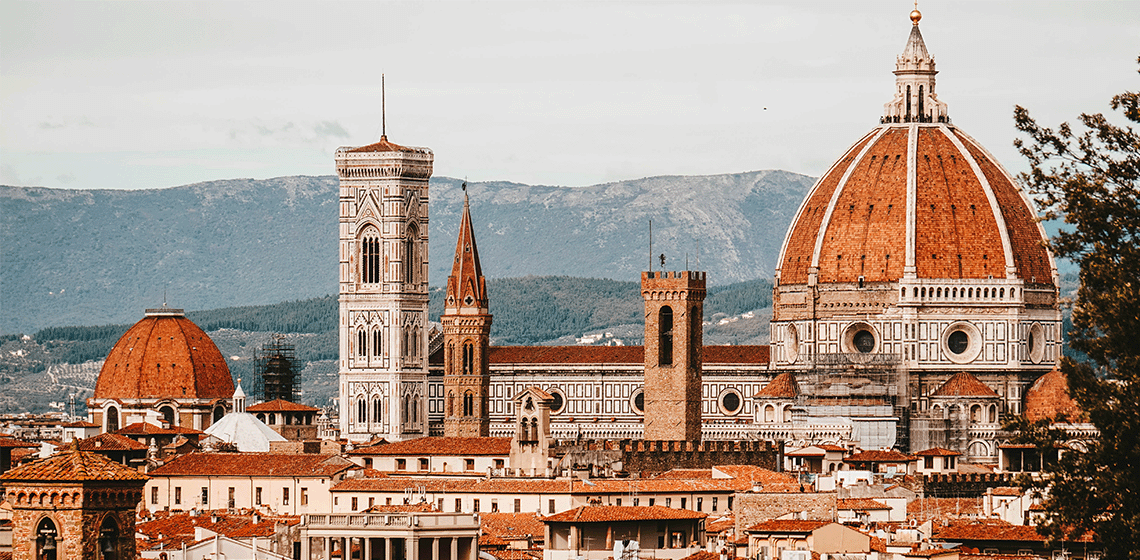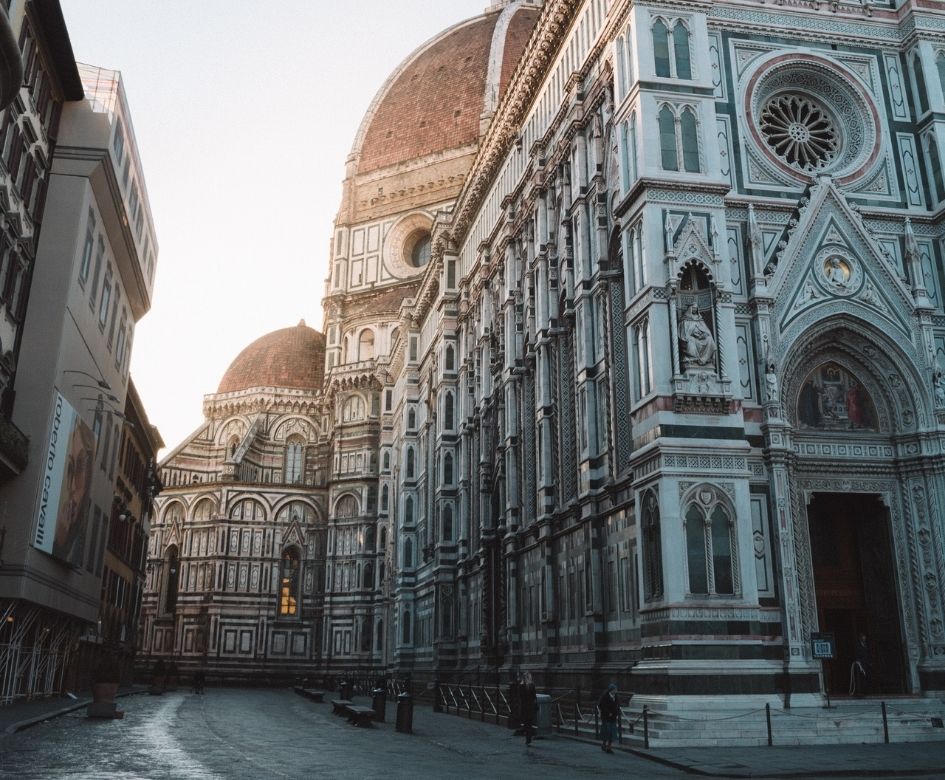
Florence’s Cathedral and Brunelleschi’s Dome
Nothing is more iconic in the Renaissance City than the magnificent Santa Maria del Fiore cathedral and Brunelleschi’s striking Duomo.
In the city of great artistic genius, it’s the first site that many seek when they visit Florence, the majestic dome that looms out of the centre of the city, and the sparkling façade of Florence’s main cathedral. Here, we take you through the history of these true symbols of the city.
The history of Florence’s Duomo in Florence
The Cathedral of Santa Maria del Fiore, commonly known as the Duomo of Florence, was designed at the end of the 13th century by Arnolfo di Cambio and dedicated to Santa Maria del Fiore, in reference to the giglio (lily) the symbol of the city. Florence has three cathedrals, the other two being San Lorenzo and Santa Reparata, above which it was built and the remains of which are still visitable from the central nave.
At 153 metres long, 90 metres wide and 90 metres high at its uppermost point, at the time of its consecration in 1436, it was one of the largest churches in the world and the largest in Europe, creating a dramatic focal point in the centre of Florence. It has been modified and renovated several times over the centuries, passing through the hands of several artistic genius’. Its design and construction were in the hands of Arnolfo di Cambio until 1302. In 1334, he appointed Giotto as master builder, and thus the incredible bell tower came to be.
Then came Andrea Pisano, who died of the plague in 1348, followed by Francesco Talenti who completed the bell tower, the central nave and the minor aisles. At the end of the 19th century, Emilio de Fabris was responsible for building and completing the facade (the original one was demolished at the end of the 16th century), inspired by Florentine decorativism of the 1300s.
The 44 stained glass windows are works by some of the most renowned names in 15th century art history, including Donatello, Andrea del Castagno and Paolo Uccello.

Brunelleschi's Dome
The Duomo is not only a symbol of Florence and the Renaissance, but also of humanism. This true masterpiece is studied all over the world through to this day, and was incredibly built without any scaffolding between 1420 and 1436 by the genius Filippo Brunelleschi. It’s the largest masonry vault in the world with a diameter of 46 metres.
Visible from all parts of the city, Brunelleschi devised an innovative self-supporting double canopy, eliminating the need for traditional support materials during construction. This spectacular innovation has been analyzed for centuries, with many replicas and studies carried out to delve into how it was possible to self-sustain such an enormous structure. The vault was finished in 1436, while the lantern and the gilded copper ball surmounted by the 1468 cross were added later.
One hundred years later - between 1572 and 1579 - the internal vault of the dome was painted by Giorgio Vasari and Federico Zuccari with a wonderful depiction of the Last Judgment, partly inspired by the mosaics of the Baptistery. This gigantic mural is best admired by climbing the 463 steps to reach the top of the Duomo, where not only will you enjoy a spectacular view over the city, but you’ll also get a close link at the stunning frescoes that you come across along your climb.






 All the services are provided by local merchants
All the services are provided by local merchants By using this site you support Florence
By using this site you support Florence We offer products with high-quality standards
We offer products with high-quality standards You stay sustainable
You stay sustainable It's a 100% trustworthy website
It's a 100% trustworthy website